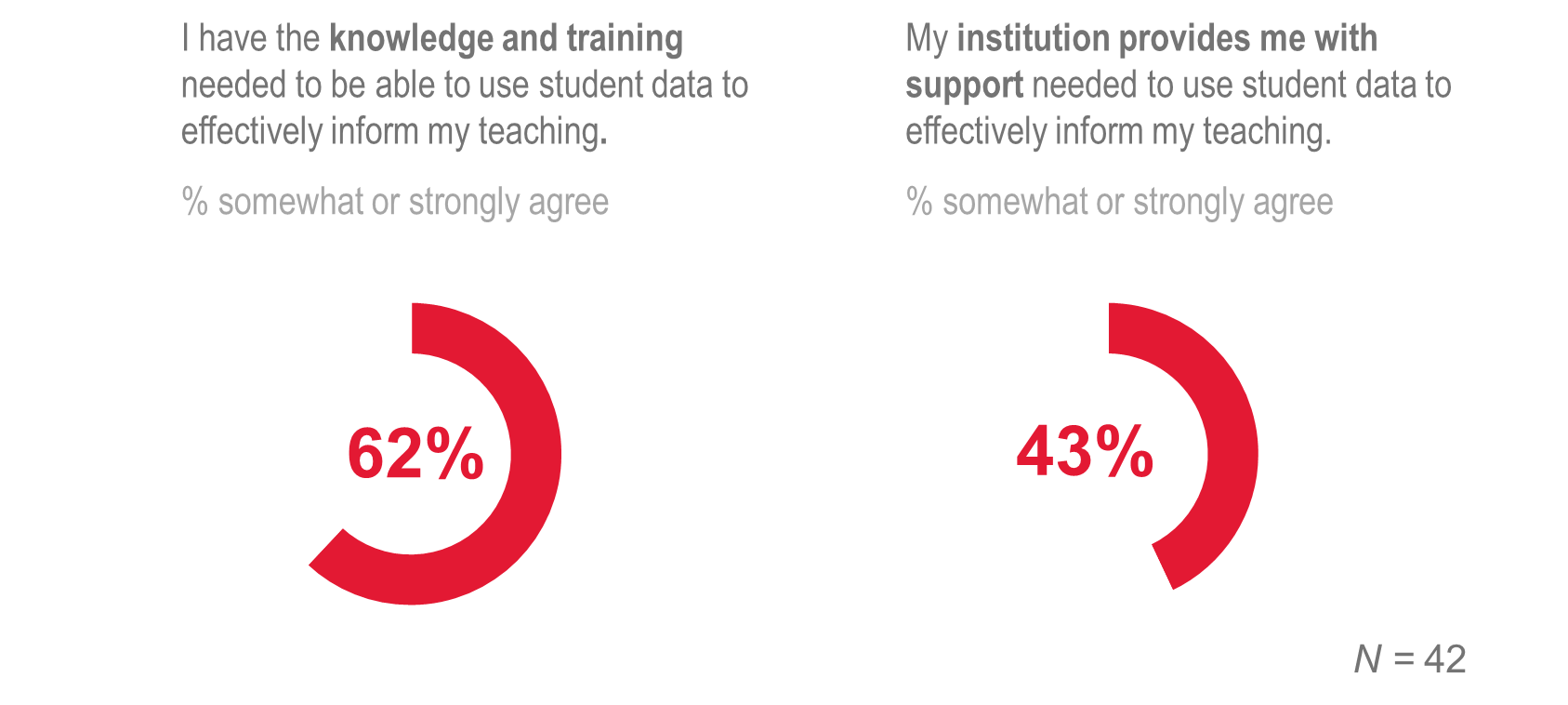The use of student data
One section unique to the instructor survey concerned their use of student data. This topic is as important as it is delicate, as institutions and instructors learn how to leverage the potential benefits of advancements in learning analytics tools while acting as responsible data stewards and ensuring data privacy and security for their students.
Instructors use student data, but student data means many things
Most instructors were favorable but judicious towards the use of student data. When asked whether student data and analytics should be used to inform course design, teaching, and advising practices, a plurality of instructors (45%) indicated that it depends, suggesting that they do not believe student data should be used indiscriminately (although they did not have an opportunity to specify the factors that should influence the use of student data). Together with 39% of instructors who simply responded yes (student data should be used), over 4 in 5 respondents (84%) suggested that student data should inform instructional practices in at least some cases. Moreover, about 3 in 5 (59%) said that they themselves use student data (Figure 13), largely to inform the design and implementation of instructional activities (93% of these instructors) and assessments (83%).
It is important to note that the concept of student data is a widely interpretable term, ranging from AI-empowered learning analytics (not currently offered by UMD) to simpler statistics available in ELMS-Canvas (e.g., page visits) or even informal mechanisms of student feedback (e.g., student surveys). Instructors who said they use student data were therefore asked to elaborate on their sources; the results are summarized in Figure 13.

Figure 13. Instructor responses to the question: “Do you use student data to inform your course design, teaching, and advising practices?” (% selected Yes). Those who responded yes were prompted to write in the source(s) of student data they use. Their responses were classified according to the categories represented in this figure. The size of each bubble represents the number of responses belonging to each category, with larger bubbles indicating more responses.
Broadly speaking, respondents were not thinking of cutting-edge technologies. Half of their responses (51%) referenced informal student feedback such as surveys or even discussions. One instructor said: “I talk with students, ask them about which materials they learned the most from.” Other commonly referred to sources included formal measures of student performance (e.g., assignments and assessments; 28%) and course evaluations (23%). Only a small number of instructors referenced statistics provided by ELMS-Canvas (13%) or Panopto (8%), such as one who said they use “recorded engagement with asynchronous instructional material (views of recorded lectures, readings, etc.) enabled by Canvas, recorded submission dates, etc.” Overall, these findings touch once again on the role of technology at UMD. When it comes to student data, datapoints such as ELMS-Canvas page views may add some additional context to understanding a student’s performance—but, as of now, they do not replace tried-and-true methods of informal feedback, formal assessment, and course evaluations to inform instruction.
Instructors want more training on the use of student data
Interestingly, instructors’ use of student data seems to surpass their self-admitted knowledge of how to use it effectively. Of instructors who said they use it, only 62% somewhat or strongly agreed that they have the knowledge and training they need to use student data effectively to inform their teaching, and only 43% said that UMD provides them with the support they need to use it effectively (Figure 14). Moreover, of those who did say they have knowledge and training they need, only 38% said that UMD provided them with training; a larger percentage (73%) said they learned it on their own.
Instructors who use student data do not, for the most part, feel that UMD provides them with the training and support they need to use it effectively.

Figure 14. From left to right, Instructor responses to the question: “To what extent do you disagree or agree with the following: I have the knowledge and training needed to be able to use student data to effectively inform my teaching.” (% selected Strongly agree or Somewhat agree); “My institution provides me with support needed to use student data to effectively inform my teaching.” (% selected Strongly agree or Somewhat agree).
